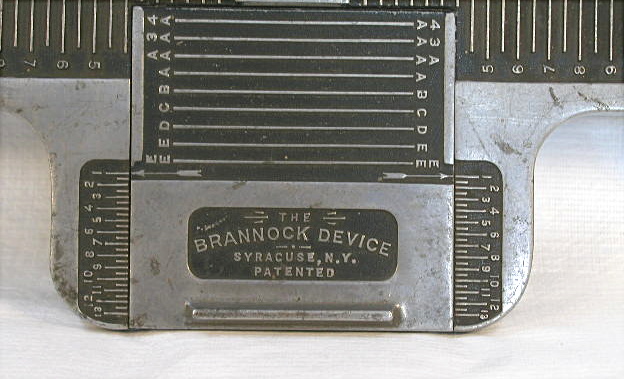9 ordinary things you (probably) didn’t know had fascinating names

- The world is full of unassuming things that someone once had to name.
- These names come from a long history of craftsmen, mythology, and thoughtful observers.
- From aglets to vagitus, we discuss the history of nine such fascinating names.
The world is full of things. So many things. It’s mind-boggling the number of things out there that we pay little to no attention to. For instance, even avid readers probably don’t stop to consider those tiny strips of cloth at the top and bottom of their hardcover book spines. What are they, and what purpose do they serve? (We’re not being rhetorical. We have no idea.)
The world is filled with details like that. Details that, at some point, someone, somewhere had to study, meditate on, or outright invent. And in doing so, they gave that little piece of the world a name and history.
To help us better appreciate the world we share, here are nine ordinary things most of us interact with regularly but that you (probably) didn’t know had a fascinating name.

1) Petrichor
Have you ever enjoyed that uniquely sweet smell wafting through the air after a long-overdue rain? That rich, earthy scent enjoys the poetic-sounding name petrichor. Coined by Australian mineral chemists in the 1960s, the word is a blend of petro- (Greek for “stone”) and ichor, the heavenly golden substance that flows through the gods’ veins in Greek mythology.
Petrichor results from the rain releasing chemical compounds into the atmosphere that have accumulated in rocks and soil during the preceding dry spell. This perfumey mixture includes ozone, plant oils, and geosmins — liquid compounds secreted by bacteria found in the soil that, admittedly, is a tad less poetic-sounding.
2) Aglet
If you wear shoes with laces, then you interact with aglets daily. If you’re more of a loafer guy, you may still find this interesting.
An aglet is the covering at the end of a shoelace, or any lace for that matter. The word comes from the Old French aiguillette, which means “small needle.” That checks out since the whole point of an aglet is to make the lace easier to thread needle-style.
If your shoes have aglets, then they likely have eyelets, too. These are the little holes designed to thread the lace through. The word comes from the Old French oeillet, meaning “small eye.” And that’s a bonus thing you likely didn’t know the name of.
Of all the words on this list, aglet is the one younger readers are more likely to recognize as it was immortalized in a song by the great Jon Colton Barry.
3) Vagitus
Please stick with us because this one doesn’t sound like what it means. Vagitus describes a baby’s cry, specifically the first cry of a newborn — meaning you can, in fact, discuss it in polite company.
Vagitus comes from the Latin vāgīre (“to wail”). According to the Oxford English Dictionary (OED), the earliest evidence for its usage comes from the writings of philosopher Nathaniel Culverwell (1652). By the 1800s, it also came to represent the “distressing cry of persons under surgical operations.” Given the lack of anesthesia at the time, it makes sense that they would adopt a special word for such anguished howls.
The Latin verb may also be related to Vaticanus (aka Vagitanus), a Roman deity of childbirth. According to Aulus Gellius, a 2nd-century scholar, Vaticanus presided over the “beginnings of the human voice” and so lent his name to “the sound of a recent voice.” Today, it may seem odd to invoke a god for something guaranteed to ruin airplane travel or a good night’s rest. But in an age when childbirth was extremely dangerous to mother and child alike, such cries were a welcomed sign of a successful delivery.

4) Philtrum
The human body is a wonder of anatomical engineering, but beyond the ever-popular head, shoulders, knees, and toes, we don’t always know the names of our features. One of the most commonly seen and rarely discussed body parts is the philtrum — that little dimple between your lip and nose.
Philtrum is a medical term these days, but it shares a connection with the word philter, aka a magical love potion. Both stem from the Latin philtrum, meaning “love potion.” Going farther back, Latin borrowed its word from the Greek philtron (“a love charm”). It’s all rather romantic.
You may notice that hair grows less bushy on the philtrum, which is why men often sport a mustache gap. The smaller the philtrum, the less noticeable the gap. It was once fashionable to cover only the philtrum and its immediate vicinity with a small ‘stache, but after Adolf Hitler adopted the style, it became frowned upon in most societies. That’s why many people call it a “Hitler mustache” even though the style is actually called a “toothbrush mustache.” (Another bonus thing!)
5) Punt
Punt has many definitions, and you’re likely familiar with a fair number. It can be a verb meaning “to kick” or “to pass something on.” It can be a type of boat. But the punt we’re interested in — the one tucked away unceremoniously at the back of every dictionary entry — is that indentation on the bottom of wine bottles.
The word is probably a shortening of punt mark: the distortion left by the iron rods used to shape glass during glassblowing. That iron rod is variously known as a punt, punty, or pontil — history’s glassblowers couldn’t quite make up their minds on that one, apparently.
As for what purpose the punt serves? Well, ask different sommeliers and grape nuts that question, and they’ll each give you a different answer. It hinders sediment from rising when you pour. It helps you hold the bottle all fancy-like. It creates the optical illusion that the bottle is bigger. It helps the bottle stand up to stress and pressure. It allows the wine to chill faster. The list goes on.
However, the punt is simply a holdover from when wine bottles were handmade and glassblowers needed a way to shape the bottle to easily stand upright. Today, machines can make bottles in all sorts of shapes, so punts are included to continue tradition more than anything.

6) Brannock device
We’ve all been there. You go to the shoe store, ask for help, and wind up with a stranger fondling your feet as you become painfully aware that you wore your ugliest, holiest socks. This moment of socially accepted torture is brought to you by that odd metal contraption every shoe clerk uses: the Brannock device.
The device is named for its inventor, Charles F. Brannock. Brannock’s father was part owner of a shoe store in Syracuse, New York, and as a university student, Brannock became interested in developing a way to accurately measure feet. He built his first model from an Erector set and was issued his U.S. patent in 1928.
And if you thought getting your foot measured was awkward today, know that before the Brannock device, the best option available was a block of wood. So do Mr. Brannock a favor and remember his name next time you go out to buy some footwear.
7) Overmorrow
Ever notice how English has so many words to describe days but no word for “the day after tomorrow”? Actually it does: overmorrow. The word is likely a loan translation from the German übermorgen, meaning the same thing. The earliest evidence for its usage comes from the Coverdale Bible, an early 16th-century English translation.
Like its antonym hereyesterday — that is, the day before yesterday and another bonus thing — overmorrow never got much traction. While you can find it in some dictionaries, it’s mostly an archaic curio. However, we feel it’s due for a comeback — if only so we have a fancy word to use when procrastinating our next project.
8) Morton’s toe
Returning to those less recognized body parts, Morton’s toe is a condition in which the bones of the big toe stop growing prematurely. This causes the second or even third toe to grow longer than it. It’s named after Dudley Joy Morton, an orthopedist who described the condition in his 1935 book, unimaginatively titled The Human Foot.
While not a well-known phrase, Morton’s toe is fairly common. One study found that 42% of American college students have it. Far rarer is squared foot, a condition in which the big and second toe are the same size.
If you happen to have Morton’s toe, then know you’re in prestigious company. The Statue of Liberty is depicted with the condition, a reference to her classical influences. Turns out, many famous Greek statues sport Morton’s toe as do paintings depicting figures from Greek and Roman mythology. Don’t believe us? Check out Venus’s extra-long index toe in Sandro Botticelli’s Renaissance masterpiece The Birth of Venus.

9) Tittle
Here’s another word that doesn’t sound like what it actually means. You don’t tittle someone; rather, you finish your lowercase I’s and J’s by crowning them with a tittle. That’s right: A tittle is a dot or small mark used in writing.
The word comes from the Latin titulus, which typically means “inscription, label, or heading.” It’s the source of our Modern English word title as well, and that association with heading something, like a book title, lent it a specialized use case among Late Latin grammarians. Titulus came to name marks that go on the top of letters. As such, tittle and title share an etymon (basically a word ancestor).
In English, tittle has roots going as far back as 1175, but its most famous usage comes from early translations of the Bible. Per Matthew 5:18, “For verily I say unto you, Till heaven and earth pass, one jot or one tittle shall in no wise pass from the law, till all be fulfilled.”
The point of the verse is that even the smallest part of God’s law, the jots and tittles, will remain in effect until Jesus’ duty is accomplished. This lent tittle its second definition, “a very small part.” That in turn spawned the now defunct expression “to a tittle” — the source for our modern expression “to a T.”
And there you have it! We promised nine but delivered 13 fascinating names for ordinary things. We hope this list helps you better appreciate the often-overlooked details of the world we live in, and speak about, every day. Failing that, it should help you at your next game of trivia — which, by the way, comes from the Latin trivium meaning “place where three roads meet,” referring to the three disciplines of liberal arts (grammar, rhetoric, and logic) in English. And that’s one more bonus thing for the road.





